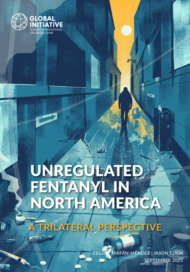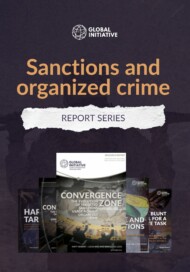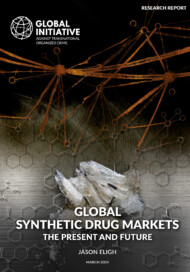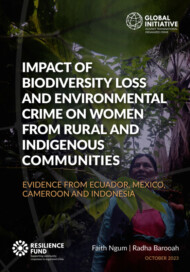Posted on 07 Feb 2025
On 1 February 2025, President Trump issued an executive order ‘Imposing Duties to Address the Flow of Illicit Drugs Across Our Northern Border’. In it, he accused Canada of failing ‘to devote sufficient attention and resources or meaningfully coordinate with United States law enforcement partners to effectively stem the tide of illicit drugs’. As a result, he threatened to impose a 25% tariff on imports from Canada, with a lower 10% charge on oil, natural gas, electricity and other energy products. This set off a flurry of diplomatic activity and outspoken statements on both sides of the border.
Just 48 hours later, Prime Minister Trudeau announced that Canada would implement a US$1.3 billion border plan that would ‘reinforc[e] the border with new choppers, technology and personnel, enhanced coordination with our American partners, and increased resources to stop the flow of fentanyl’. He added that Canada would also appoint a ‘fentanyl czar’, list drug cartels as terrorists and launch a Canada–US joint strike force to combat organized crime. This was followed by a prime ministerial directive to align the new border plan with the country’s existing intelligence priorities and to mandate closer domestic and bilateral intelligence cooperation on organized crime and drug trafficking.
At least in the short term, a crisis has been averted and the proposed tariffs have been paused for 30 days. While this situation highlights several challenges, it also creates opportunities for enhancing cooperation to address a common transnational threat.
Illicit trade imbalance
Canada is not a ‘big player’ in the fentanyl trade: well under 1% of the fentanyl entering the US comes from Canada. In fact, fentanyl from Canada is not even mentioned as a drug trafficking threat to the US in the most recent assessment by the US Drug Enforcement Administration. While illicit fentanyl production does occur in Canada, most of the product is consumed domestically, with surplus amounts smuggled to overseas markets, such as Australia. In the US, 97% of fentanyl seized is sourced from the southern border with Mexico, with China being the primary source of the precursor chemicals used in the production of the drug.
While Trump complains about an unfair trade imbalance with Canada, when it comes to illicit economies, the shoe is on the other foot. There are far more drugs flowing into Canada from the US than in the other direction, particularly methamphetamine, cocaine and fentanyl. Illicit firearms are also an issue of concern, as a surge in gun crime in Canada in recent years has been linked to the smuggling of US weapons across the northern border.
The US is justifiably concerned about the impacts of fentanyl. More than 100 000 Americans die each year from drug overdoses, and at least 75% of these deaths are related to fentanyl. Last year in Canada, 21 deaths a day were attributed to opioids, an equally concerning statistic.
But while there has been a considerable historical focus on fentanyl, the continental drug market has continued to adapt and evolve to efforts aimed at disrupting it. Indeed, the pace of continuous market innovation and change could ultimately lead to other types of substances eclipsing fentanyl; we are ill-prepared for such a transition.
Warning signs are already apparent. Stronger synthetic opioids and new synthetic adulterants are proliferating. Nitazene compounds, some of which are far more potent than fentanyl, are increasingly common. Xylazine, a powerful veterinary tranquilizer, has emerged as a regular adulterant because of its ability to prolong the duration of a drug’s effect on a user. Eleven new synthetic substances were identified in the Canadian drug market in 2023, with methylfentanyl, a fentanyl analogue, found to be the most common.
Yet within this evolving marketplace, there has also been some positive progress. Although fentanyl continues to threaten the lives of North Americans, incidents of fatal overdose from fentanyl in the US have declined by 21% since June 2023. In Canada, the province of British Columbia, often considered the epicenter of the country’s opioid crisis, saw overdose deaths fall by 13% last year to their lowest level in four years. These are encouraging developments that should not get lost in the rhetoric.
Still, the current fentanyl fixation risks distracting attention from wider problems of organized crime. The Criminal Intelligence Service Canada reports that there are more than 600 organized crime groups operating in Canada, many of which include drug trafficking in their operations. These groups are widely integrated with each other, and externally networked to 48 countries, with the US and Mexico representing the most common transnational interconnections. For example, Mexican cartels have transcontinental influence, having expanded their fentanyl and meth production operations abroad, including to western Canada. In many cases, they have opened new markets, including encouraging a shift to licit chemicals as drug pre-precursors, as well as to industrialized models of drug synthesis.
This reflects wider shifts in the global drug economy that have accelerated in the wake of the COVID pandemic. The way criminal organizations are structured, the geographies in which they operate, and the methods they use to move their products are all being transformed. This creates a myriad of new challenges to public security and public health that will require sophisticated and joined-up responses in place of rhetoric and reaction.
Strengthen existing cooperative platforms
Trump’s criticism of Canada and Mexico for being ‘soft on crime’, while perhaps being used as a foil to achieve economic concessions for the US, presents an opportunity for more effective action if it is calibrated, multifaceted, and learns from the successes and failures of past approaches. Even the most powerful countries have a self-interest in cooperating to tackle transnational threats to their national security. Since drugs, guns, money and migrants flow across borders, states need to work together.
Several platforms and cross-border cooperation initiatives already exist to facilitate cooperation among North American countries, including the Trilateral Fentanyl Committee and the North American Drug Dialogue. However, the recent commitment by Mexico and Canada of funding, personnel and technology, including the possible use of troops to militarize their borders, suggests that a great deal more operational cooperation will be needed to meet White House expectations. Importantly, Canada could raise the issue on the international agenda as part of its chairing of the G7 this year and spearhead international efforts to promote a global strategy against organized crime. Furthermore, the three countries could work together to launch a ‘chemical action task force’, a new international compliance monitoring body modelled on the existing Financial Action Task Force.
It is important to underline that while much of the public discourse has focused on supply-side, security-centered initiatives, it is also essential to devote attention and resources to public health programmes. There is no point in averting a trade war by starting a war on drugs that costs money but saves few lives. Canada can lead by example by building on its experience of trialling community-based, demand-side initiatives designed to reduce the harms caused by drugs.
A wake-up call for Canada
Canadians may have been stung by Trump’s threat of a trade war, but his criticism brought out an issue that needs serious attention north of the border. Canada prides itself on being a safe country, but in recent years it has struggled with problems of money laundering, drug trafficking, migrant smuggling, car theft and gun crime. There have been targeted operations against specific criminal markets, but no coordinated, holistic federal plan.
While Canada has national strategies to combat human trafficking and cybersecurity, it does not have a national organized crime strategy. Indeed, Canada has not had a comprehensive report on organized crime since 2006, and the last National Agenda to Combat Organized Crime was agreed to 25 years ago. Perhaps the recent threats from Washington will ultimately drive a more strategic approach to this policy challenge.
But new approaches are needed at the continental level as well. The US and its neighbours need to anticipate and prepare for emerging challenges rather than dwelling on those of the recent past. And effective responses will require more than hardware and boots on the ground; better intelligence sharing, cooperation to track and disrupt illicit financial flows, and a stronger focus on public health will also be vital.
The US–Canada border was once recognized as the longest unprotected border in the world, but that is changing. Concerns about transnational organized crime have tested the relationship between two traditionally good neighbours. This crisis can be turned into an opportunity if there is a genuine willingness among North American countries to work on an issue that necessitates a mutually beneficial, cooperative response.



